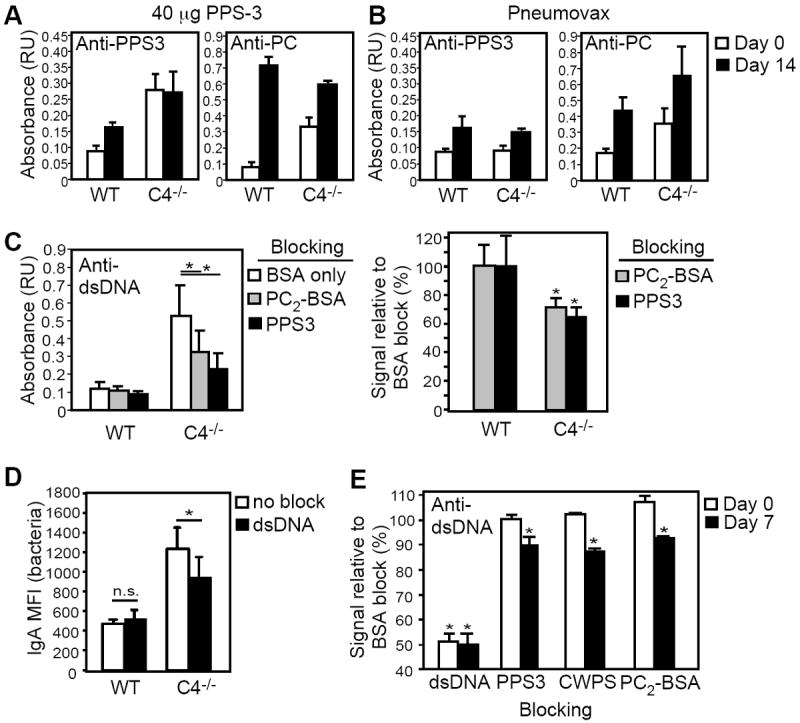Figure 4. Increased dsDNA-specific IgA levels in C4-/- mice following PPS immunization is partially due to PC-crossreactive Ab.

A-B) PPS3- and PC-specific IgA levels in WT (n=7) and C4-/- (n=5) mice on day 0 (white bars) and day 14 (black bars) following i.p. immunization with 23 μg Pneumovax or 40 μg PPS3. C) Inhibition of dsDNA IgA binding by preincubation of immune sera (day 14 post 40 μg PPS3) with 5 μg/ml PC2-BSA or PPS3. dsDNA-specific IgA levels measured by ELISA are shown for WT and C4-/- sera in the left panel (n=6-9 mice/group). The percent of signal obtained for blocking conditions relative to BSA only-blocking (BSA) conditions are graphed in the right panel. D) Reactivity of serum IgA from Pneumovax-immune (d14) WT (n=4) and C4-/- (n=6) mice with heat-killed EF3030 in the presence and absence of dsDNA blocking, as assessed by flow cytometry. Differences in mean fluorescence intensities (MFI) of blocked and non-blocked samples were determined by paired t-test. E) Inhibition of anti-dsDNA IgA binding by preincubation of naïve and immune C4-/- sera (day 7 post Pneumovax) with 25 μg/ml dsDNA, PPS3, CWPS, and PC2-BSA. The percent of signal obtained for blocking conditions relative to BSA only-blocking (BSA) conditions are shown. For A-D, mean (± SEM) values are shown. Asterisks (*) in C-E indicate significant differences between values for non-blocking vs. blocking conditions (p<0.05).
